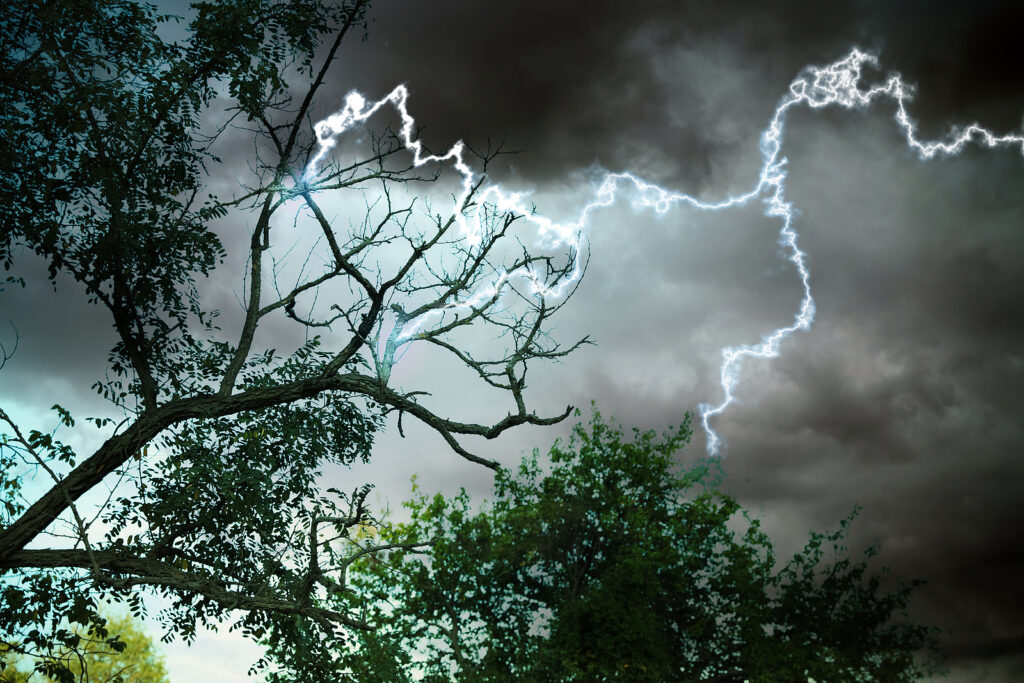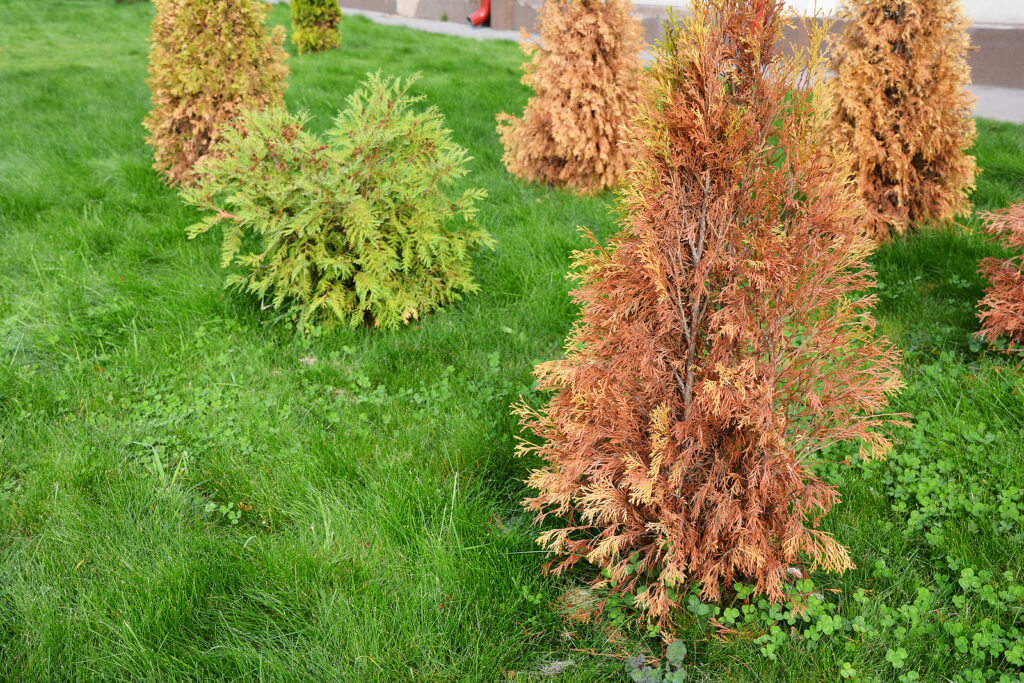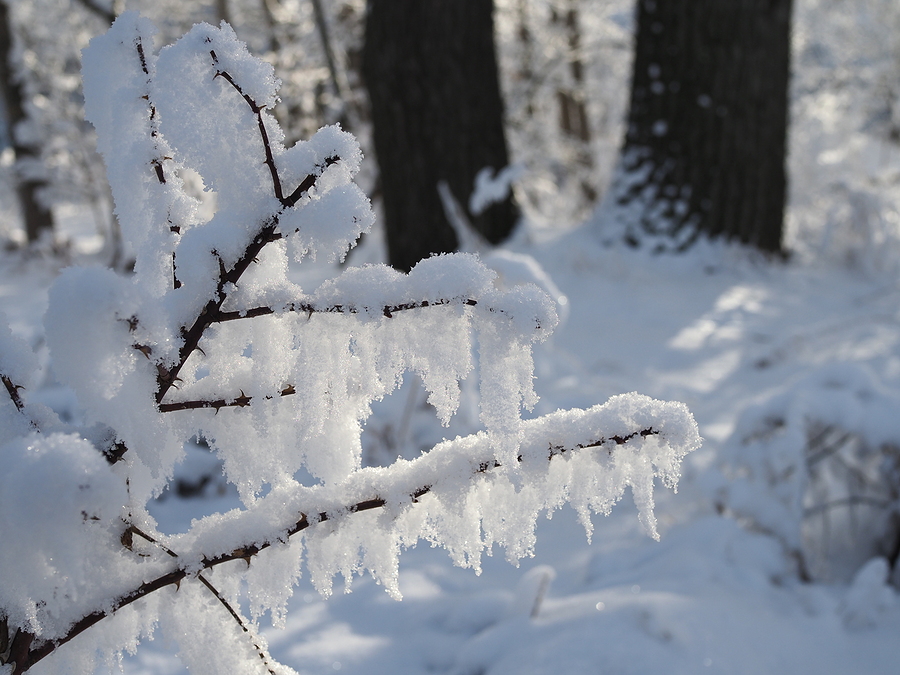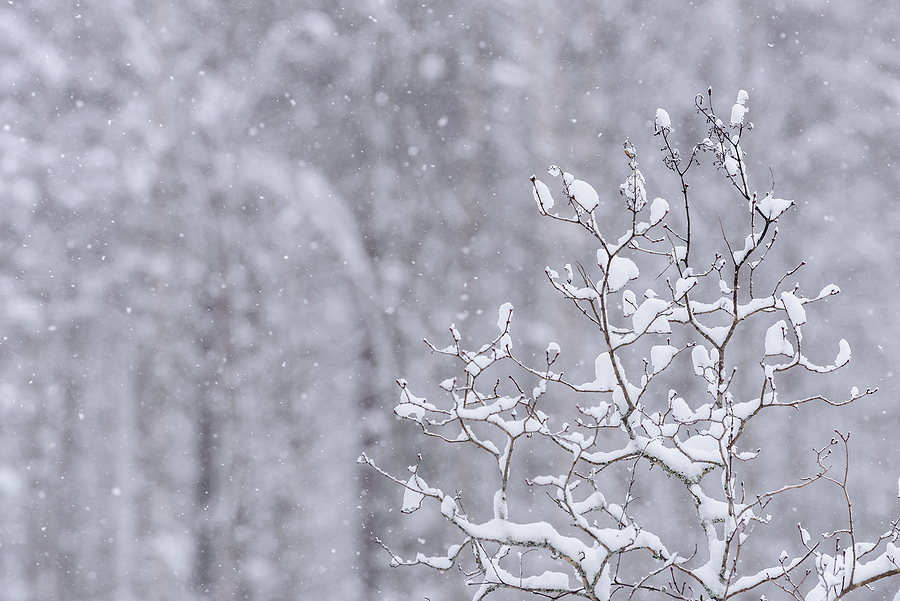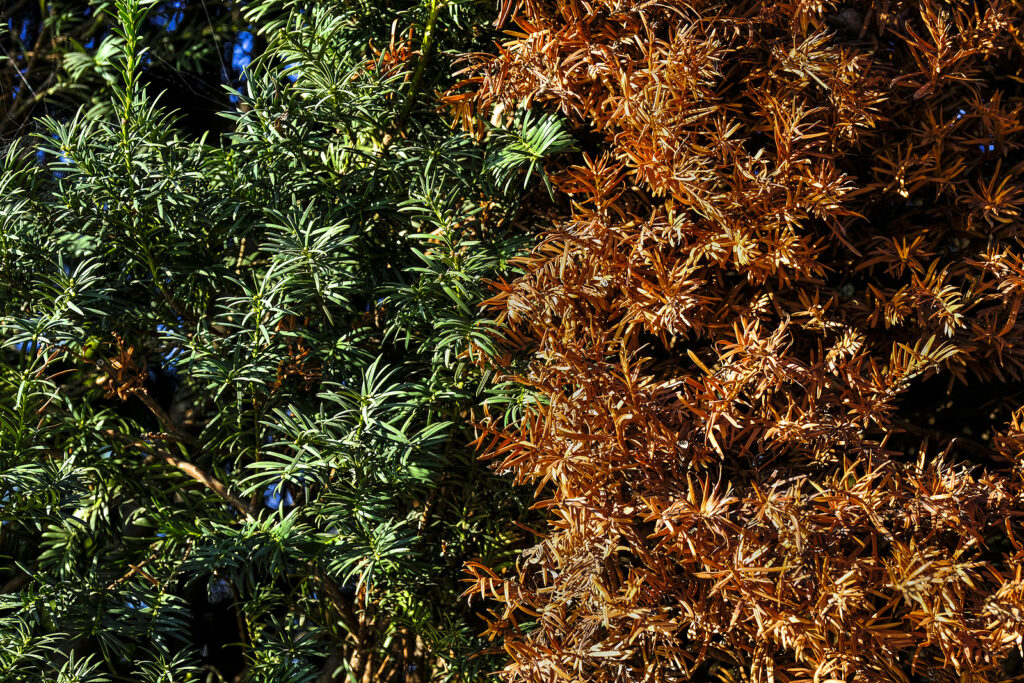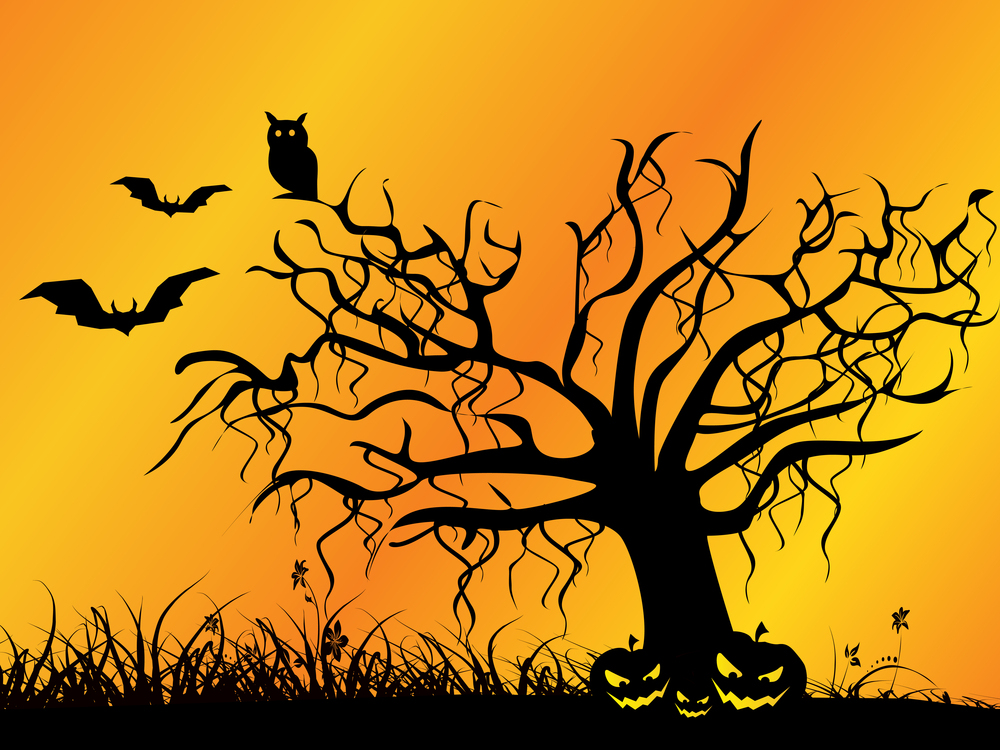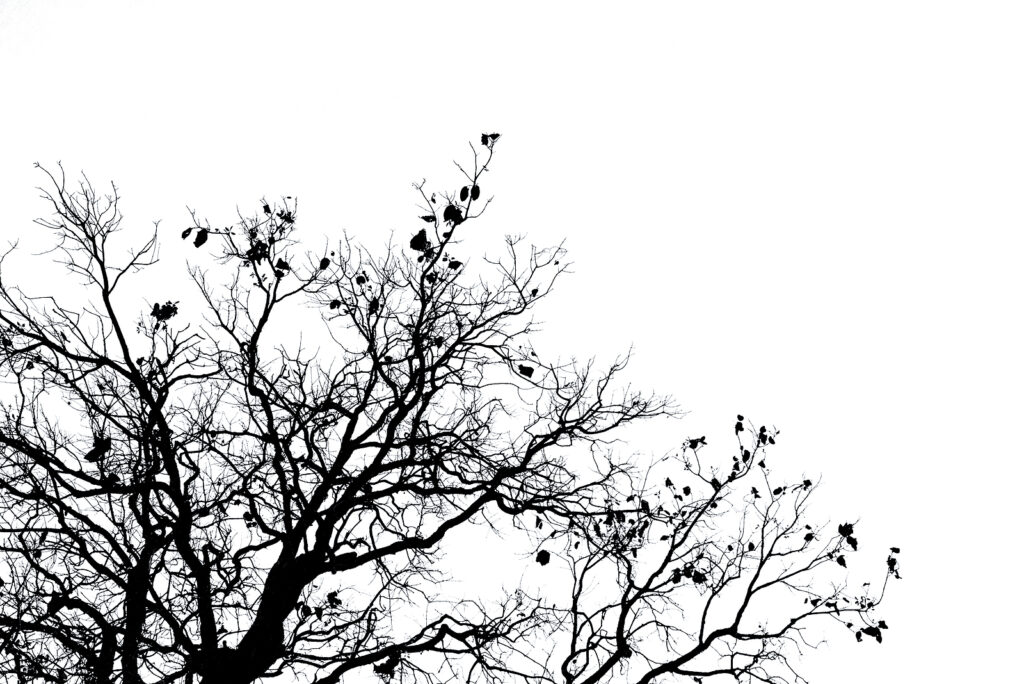As with all living organisms on the planet, trees are vulnerable to illness and decline. But with the right tools and resources, you can protect your trees from falling victim to common tree diseases. If you have noticed a sudden change on the leaves of your shrubs and trees, it could be due to a tree illness. One of the most common signs of a diseased or infected tree is browning and curled leaf edges.
Continue reading to learn which tree diseases are usually responsible for browned and curling tree leaves, plus what you can do to prevent further decline in your affected landscaping trees.
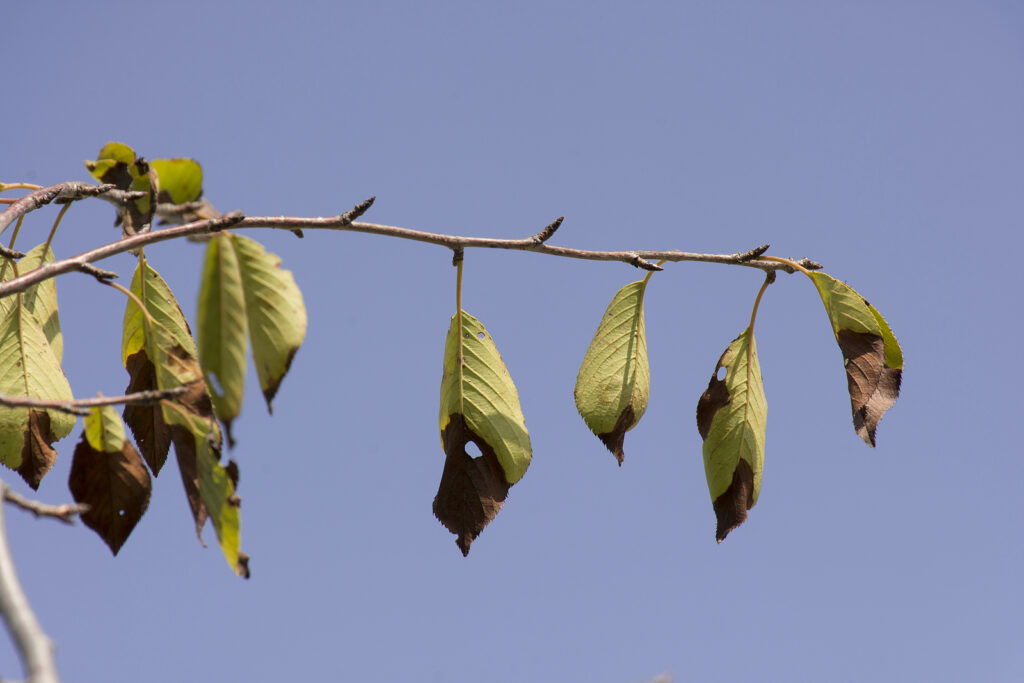
Leaf Scorch
Leaf scorch is also known as leaf wilt and leaf burn. The signs of leaf scorch are easy to identify. Leaf burn will cause tree leaves to brown at the edges, curl up, wilt, and fall off. In evergreen trees, the pine needles will simply turn brown or orange in color. The reason behind leaf wilt is lack of hydration and nutrients. Something occurs beneath the ground that prevents the root system from successfully pulling water and nutrients from the earth and distributing it through the veins of the leaf system. The lack of food and water causes the leaves to wilt and die.
Leaf scorch is not curable or reversible; however, a tree can recover and begin producing new, healthy foliage if proper care is taken. The first step in turning leaf wilt around is determining the source of the problem. This can be from a variety of situations, from new construction development to drought and high heat intervals. Be sure to consult a professional Indianapolis tree service professional for an accurate and reliable diagnosis.
Leaf Blight
On the subject of leaf disorders, leaf blight is another common disease that affects the leaves of prevalent North American hardwood trees. The authentic name of leaf blight is Anthracnose and is most commonly spotted in the eastern parts of the United States. This syndrome is customarily marked by several burn-like blotches that look like dead spots or holes on tree leaves. Leaf Blight is caused by a fungus that reproduces by means of spores.
During long rainy or windy seasons, these microscopic spores can quickly travel through the air. They need wet weather to germinate. Anthracnose is not a deadly disease in most cases; however, a tree can suffer from persistent defoliation. The repetitive loss of leaves can cause the tree to become weak, making it vulnerable to other tree diseases. Again, in this situation, it is best to consult a professional in the tree service industry for dependable advice and guidance concerning residential or commercial tree care.
Choose Professional Tree Service
Sadly, there isn’t a whole lot you can do to prevent your landscaping trees from disease. But with the right knowledge, you can look out for changes in tree health and catch problems early on. Knowledge coupled with routine tree service is the best formula for preventing tree decline in your landscaping trees. Talk to a local and trusted tree service company in Indianapolis for help determining the best tree care plan for your property.
Are you looking for a qualified Indy tree care contractor to help you bring out of the best of your verdant landscape? Contact Timberland Tree Care at 317-348-0811 for licensed and insured tree service in Indianapolis, Indiana. We serve residential and commercial customers with comprehensive tree service solutions at the right price.
Related Posts:
3 Trending Pest Control Products for Trees and Shrubs
How to Identify a Dead Tree
Reasons Why Your Tree Died Over Winter

